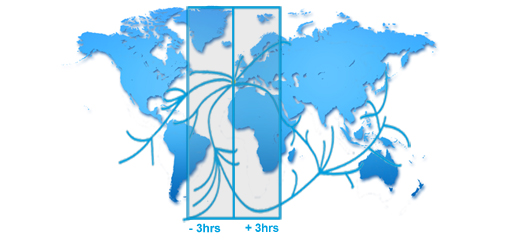|
Nature & Ecology
Portugal really cares about its environment. For many years, Portugal is developing renewable resource industry. It has considerable wind and river power resources, the two most cost-effective renewable resources.
The Portuguese Government enforced strict regulations to ensure the nature and countryside remain unspoiled — so, in future you won’t regret about your investment. Portugal is the country of natural and diverse beauty — from mountains, rivers, cliffs to clean sandy beaches.
Portugal Weather, climate and geography
 Weather & climate Weather & climate
Not surprisingly, considering its close proximity to northern Africa, Portugal is one of the warmest European countries with an average temperature of 15°C (55°F) in the north and 18°C (64°F) in the south, while the Azores and Madeira are wetter and hotter respectively off the coast. It can become rainy and windy during autumn and winter, but spring and summer see temperatures soar to as high as 40°C (104°F) around the interior and 35°C (95°F) in the north.
The northwest has mild winters with high levels of rainfall, and fairly short summers. The northeast experiences longer winters and hot summers. In the south, summers (May to October) are warm with very little rain except in early spring and autumn. Snow will fall in the north, but melts quickly.
Required clothing:
Light- to mediumweights and rainwear are advised (Portugal has one of the highest rainfalls in Europe). In summer, wear very light fabrics, preferably linen, as temperatures can soar and prove very uncomfortable if you have packed wrongly. Should you travel in spring or autumn, pack a combination of both.
Geography
Portugal juts out into the Atlantic in the far southwest of Europe otherwise known as the Iberian Peninsula. The only country it shares a border with is neighbouring Spain to the north and the east, with the Atlantic Ocean hugging its 800km (500-mile) coastline to the south and west.
The country also comprises the Portuguese islands of the Azores and Madeira. The Azores lie around 1,100km (700 miles) west of Lisbon, while Madeira sits just north of the Canary Islands to the west of Morocco.
Outside the large urban areas, the countryside is a great deal more rural and sparse than in many other European countries. Portugal is crossed by several rivers which have their origin in Spain. These flow from east to west out into the Atlantic or north to south, the main rivers being the Minho and Douro in the north, and the Tagus and Guadiana in the south.
Portugal possesses a high plain of varying height intersected by deep valleys. The north of the country is rugged, mountainous and dotted with vineyards. The high northern point of the Serra da Estrela proves a popular area for skiing, while Serra de São Mamede further south on the Spanish border is a hiking favourite.
After the stunning slopes of the central regions, the vast plains of the Alentejo region stretch south of Lisbon, with a range of mountains dividing the Alentejo from the Algarve, whose wide sandy beaches and attractive bays run along the south coast. Approximately half the country is used for agriculture.
The capital, Lisbon, sits about two-thirds down the west coast. Porto is also situated on the coast in the northwest of the country. Smaller Faro nestles on the southern end of the country, its airport a busy hub for Algarve sunseekers and swathes of golfers looking for year-round sun. Braga, Coimbra and Setubal are also near the coast and rivers.
|





